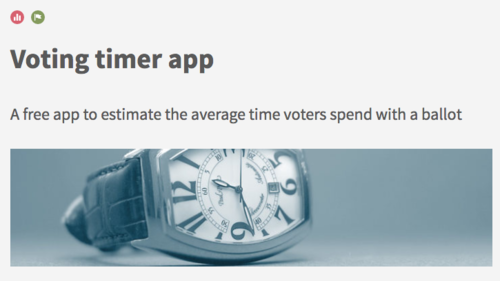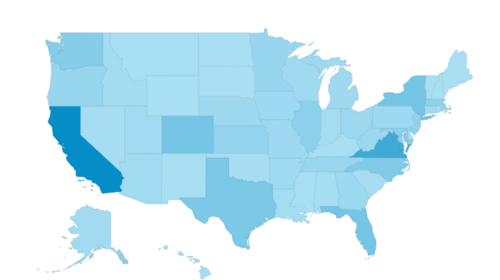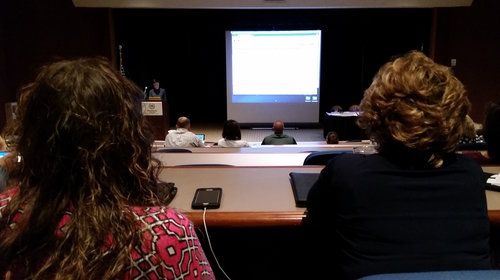The Election Toolkit: The First 4 Months
The Election Toolkit launched 4 months ago, and since then, its reach and impact have expanded. With Election Day less than a month away, the Toolkit is geared up to meet the needs of election officials across the country. Let’s take a look at the first 4 months of the Toolkit and how it’s developed.
New Tools
A living, growing resource, the Toolkit continues to expand. It launched in June with 11 tools and since then, we’ve added 2 new tools to the lineup.
The Polling Place Resource Planner can help election administrators estimate voter wait times and make judgments about how best to allocate resources on Election Day.

And the Voting Timer App allows election staff to produce reliable data on how long voters will spend with a ballot, controlling for variations in ballots and voting equipment. While election officials observe voters at a polling place, they can also contribute to a national study on voting times.
We’ve also expanded the number of graphics in our Civic Icons and Images tool, which now contains 22 collections.
A Growing Reach
In its first 2 weeks, the Toolkit home page received over 1,400 unique page views, and that number has more than doubled since then. In September, we celebrated a milestone: the Toolkit had received visitors from all 50 states. And at this point more than 70 people keep up with the Toolkit by subscribing.

Along the way, we’ve heard from folks from all over. In addition to the stories that we highlight in our news articles, we’ve seen election officials and other civically minded people use the tools to reach civic engagement goals in their communities.
For instance, the Civic Icons and Images have been used by the State of Hawaii Office of Elections, appearing on the office’s website and in its absentee voter guide. This tool has also found fans in Virginia, Oregon, California, and New York.
Meanwhile, public servants and advocates have made use of the Voter Registration Drive Kit. To help promote voter registration, this kit has been adopted by a student affairs coordinator at Ball State University in Indiana, a re-entry office in Pennsylvania dedicated to supporting citizens who have been incarcerated, and a community health center in the Mississippi Delta region.
And the Infographic Design tool has been especially popular, empowering election staff in Ohio, Florida, Georgia, and Tennessee to create outreach materials to engage with voters.
Toolkit Hits the Road
Of course, in order for people to use the Toolkit, they need to know about it. To help spread the word, we’ve traveled to conferences and given presentations to reach government officials from coast to coast.
In July, we presented at the CCCA conference in Englewood, Colorado.
In August, we traveled to VRAV in Roanoke, Virginia and ACECA in Little Rock, Arkansas.

In September we met officials at the Northern District meeting of ACCCIND in Monticello, Indiana and COANJ in Atlantic City, New Jersey. In addition to in-person meetings, we participated in 2 webinars in September: one held by Next Century Cities and another presented by the Ash Center for Democratic Governance and Innovation at the Harvard Kennedy School.
Most recently, in October, we spoke at the annual NDACo conference in Bismarck, North Dakota.
Are we done promoting the Toolkit? Not even close. Even after the General Election, we’ll continue to hit the road to share the Toolkit with election officials and talk about how they can use it to overcome challenges and meet goals in their communities.
What’s Next
Are you ready for Election Day? The Toolkit is! We’re reorganized the website to prioritize tools that can help you on November 8 — especially technologies you can use at polling places.
And we have 2 new tools in the development stage: an easy-to-use election results display platform and a usability testing kit to help election officials test and improve voter-facing materials.
Do you want to keep up with the Toolkit as it grows? Sign up to bookmark your favorite tools, leave feedback, and be part of the community. And be sure to talk about the Toolkit on Twitter using #ElectionTools.
How are you using the Toolkit? We’d love to hear about your experience. Email us at [email protected].